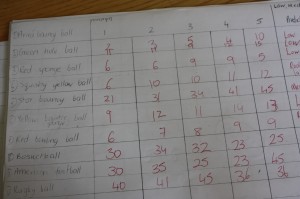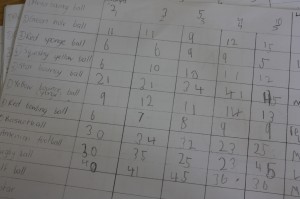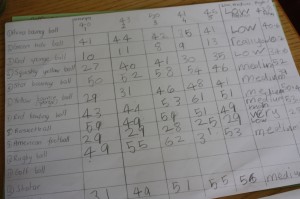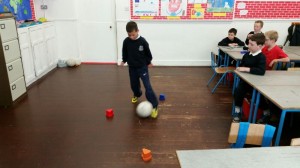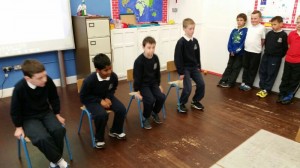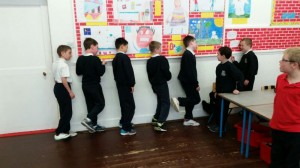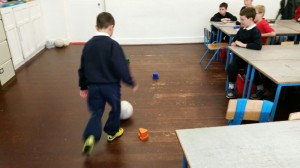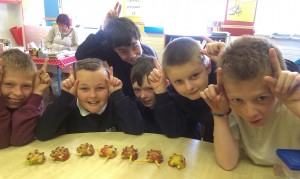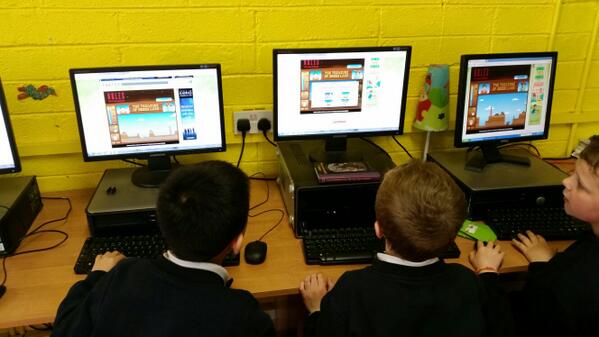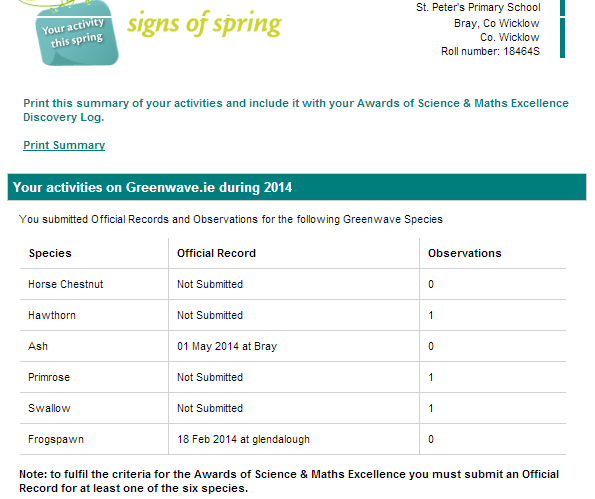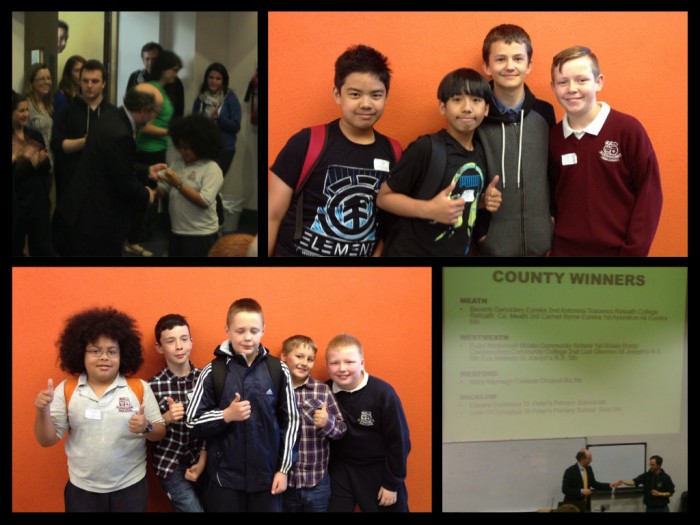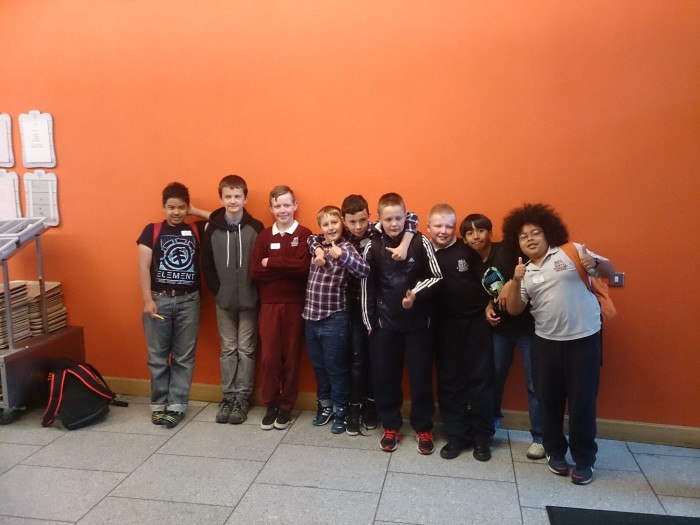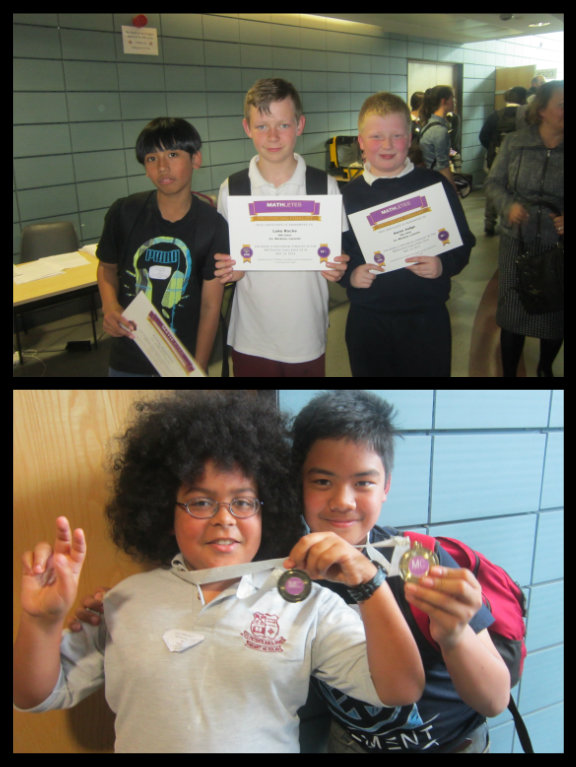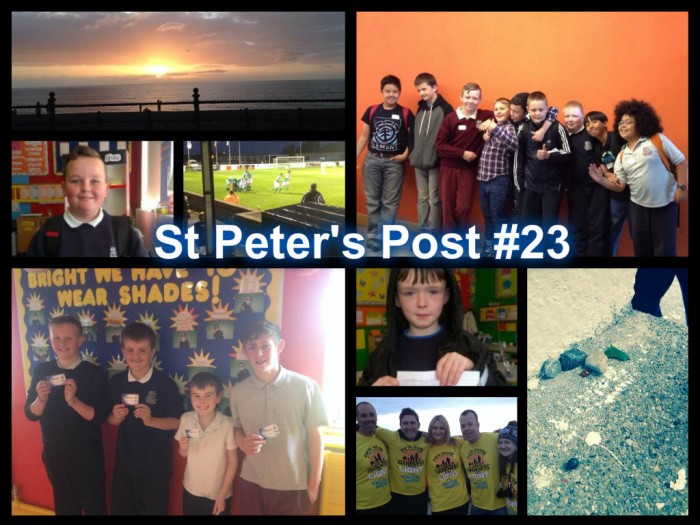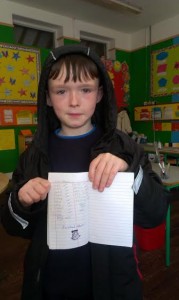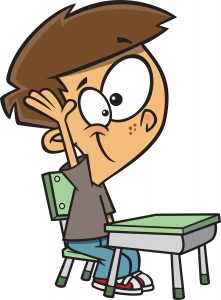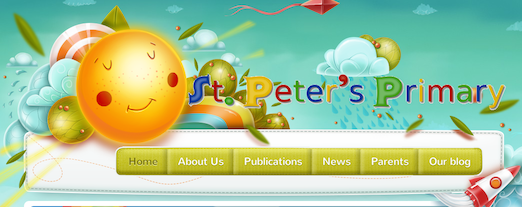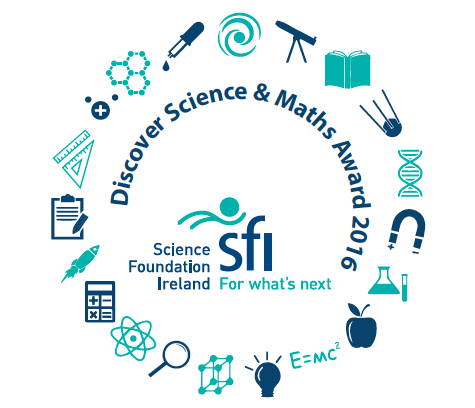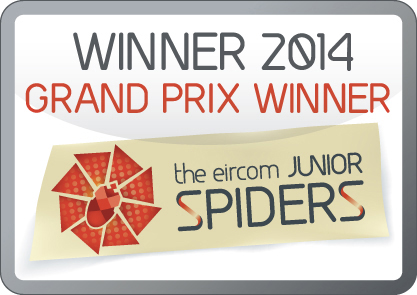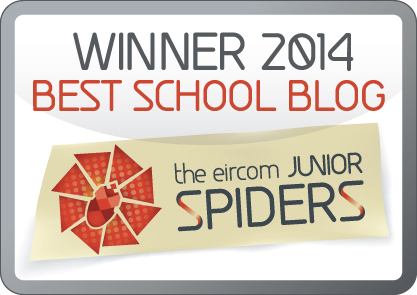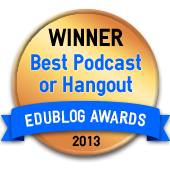Hello, we are Ms. Brennan’s 2nd Class. This is our first time to do the Discover Primary Science and Maths Project. We are really excited. We completed part two of the project where we designed and made experiments from the Materials strand. We did the ‘Which Ball Is The Bounciest’ test. We hope you enjoy reading our project!
Which ball is the bounciest?
What you need
- A variety of balls
- Metre stick
- Hard surface on which the balls can bounce
- Grass surface on which the balls can bounce
Here we are, showing you the balls we used!
Skills we used for this experiment
1. Predicting
2. Observing
3. Investigating
4. Experimenting
5. Measuring
6.Recording.
What we were taught before we did the experiment
Balls bounce because they are elastic. When a ball hits a hard surface its shape changes – the part touching the ground flattens slightly. It recovers its original shape quickly and bounces back up!
Questions Ms. Brennan asked us
1. Would you use a ball of plasticine to play tennis or ping pong? Why not?
No – because a ping pong ball is bouncy and plastic and a plasticine will just stick to the ping pong bat or tennis racket. If you went to serve the ‘ball’ it would just fall. – Codie and Casey.
2. Do you think the squashy ball will bounce well?
Not that well. Maybe a little bit. – Dylan M and Kayden CD
3. What sort of balls do you think will bounce best?
A tennis ball. I see it on TV when they bounce it on the ground it bounces really high – Dean T and Caoilynn.
4. Does anybody watch tennis on TV?
We do. We know Andy Murray from Scotland. You can play on grass or on clay we think. – Kia and Caithlin
5. Why do you think they change the balls after every 7 games at Wimbledon?
I think they change the balls because every time you bounce/strike a tennis ball, it could lose its shape a little more and it will not be as bouncy! The balls lose their bounce, because some of the air has been knocked out of them, i.e. they are slightly softer) – From Dylan F and Dylan M.
The Experiment
1. First we predicted which of the balls was the bounciest, making it low, medium or high bounce!
2. Then we discussed how we might do a fair test to see if our guesses were right. We asked ourselves questions such as “What are you going to do? What do you think will happen?” How will you make it a fair test?” We dropped the balls from the same height, onto the same surface. The balls were dropped and not thrown.
3. Some heights were difficult to measure. We guess-timated the height of the bounce. We also used words to measure the height.
(i) the bounces were recorded as ‘low’, ‘medium’ or ‘high’ and put in three different piles;
(ii) Two balls were dropped together by the same child (the easiest way to drop balls at the same time!) and their bounces were compared.
(iii) We used charts on the wall to measure height.
(iv) We also used pieces of wool cut to each height, and we hung the pieces of wool to compare.
5. We recorded our results, and we compared these lengths with our predictions. They compared our results with other groups.
We explained our scores.
Which surface was best?
The wooden floor was best for bouncing!
The Maths in our project
1. Number: Comparing and Ordering
2. Measures: Length (standard or non-standard)
3. Data: Represent data (e.g. bar charts for different balls on same surface or same ball on different surfaces)
Proof of our work!
Here is proof of our inside test!
Here is proof of our outside test!
Conclusion
We made average bouncing heights from our guess-timates. Here they are!
1. Aviva Bouncy Ball – 43.8cm
2. Green ball with holes – 40.6cm
3. Red sponge ball – 10.2cm
4. Squishy yellow ball – 34.6cm
5. Star bouncy ball – 52cm
6. Yellow sponge ball – 39cm
7. Red plastic bowling ball – 50.4cm
8. Basketball – 53.4cm
9. American football – 28cm
10. Rugby ball – 50cm
If we were doing this again we would make sure we only used balls of the same shape and of same size. This would be a fair test.
The basketball was the bounciest, is it is full of air!
Thank you for reading our project. We hope you enjoyed it! We look forward to doing another project again soon.


